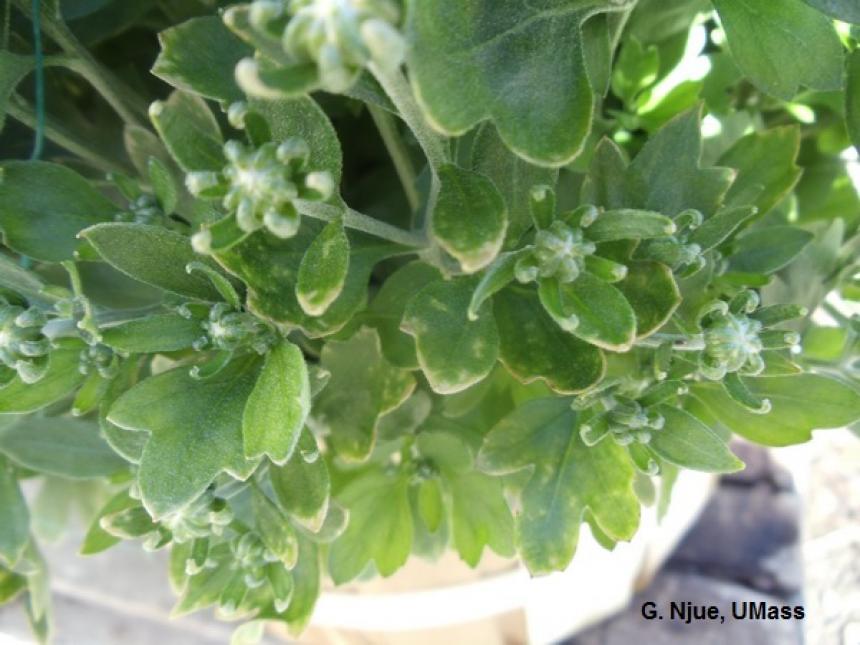Providing adequate fertility is important in maintaining optimum plant growth in mums. However over-fertilization can result in high concentrations of soluble salts that can cause injury to the plants seen in this photo. Chrysanthemums are among a number of plant species known to have susceptibility to soluble salts injury. Over-fertilization results in high concentrations of soluble salts in the medium. As the salts are translocated throughout the plant they accumulate at the leaf tip and margins and when they reach toxic levels they cause “salt burn”.
Soluble salts injury first occurs as mild chlorosis and then progress to necrosis of leaf tips and margins. This shows up as browning of leaf tips and margins. Roots can also be injured by high concentration of soluble salts in the growing medium. This can predispose the plant to root rot diseases such as Pythium. Root injury may also interfere with water uptake and result in wilting of the plant.
Practices that can lead to soluble salt injury include:
- Excessive amounts of soluble fertilizer added at one time
- Application of soluble fertilizer several times with little or no leaching
- Use of excessive amounts of controlled release fertilizers
- Poor drainage of the growing medium
To prevent soluble salts injury: avoid excessive fertilization, and when irrigating apply enough water to allow sufficient through the container. If you have high soluble salts irrigate with clear water and allow at least 20% leaching.
